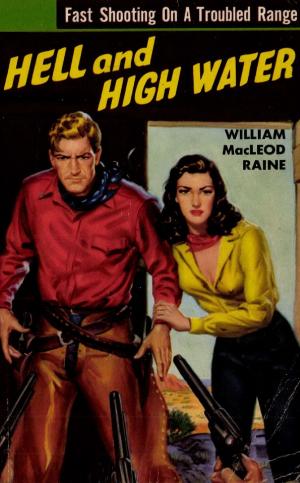Operational Art In The Sioux War Of 1876
Nonfiction, Social & Cultural Studies, Social Science, Cultural Studies, Native American Studies, History, Americas, United States, 19th Century, Biography & Memoir| Author: | Major James W. Shufelt Jr. | ISBN: | 9781782899556 |
| Publisher: | Normanby Press | Publication: | November 6, 2015 |
| Imprint: | Normanby Press | Language: | English |
| Author: | Major James W. Shufelt Jr. |
| ISBN: | 9781782899556 |
| Publisher: | Normanby Press |
| Publication: | November 6, 2015 |
| Imprint: | Normanby Press |
| Language: | English |
This monograph discusses the role of operational art in the Sioux War of 1876, the U.S. Army’s largest campaign between the Civil War and the Spanish-American War. This campaign, often overlooked in the historical study of operational art, demonstrates the successful application of operational art in a non-traditional campaign: the U.S. Army’s defeat of the Northern Sioux Indians and their allies. This campaign also demonstrates how operational art can lead to operational victory, despite repeated tactical failures.
The monograph first defines operational art, based on emerging U.S. Army doctrine, and then reviews its role in three campaigns that served as models for the Army’s operations in the Sioux War of 1876: Grant’s 1864-1865 campaign to defeat the Confederacy, the Southern Plains War of 1868-1869, and the Red River War of 1874-1875. The plans and execution of the Sioux War of 1876 are then reviewed and analyzed utilizing the definition of operational art and modem concepts for operational planning. The causes of failure in the 1876 campaign are then analyzed, based on Cohen and Gooch’s methodology for analysis of military failure, followed by explanation of the campaign’s ultimate success.
The monograph concludes that the Frontier Army’s success in this campaign demonstrates successful application of operational art, despite many errors in planning and execution committed by General Sheridan and his subordinates. Additional lessons from this campaign include the danger of blindly applying previously successful models for operations, the preeminent role of the operational commander, and the validity of operational art in campaigns against unconventional foes.
This monograph discusses the role of operational art in the Sioux War of 1876, the U.S. Army’s largest campaign between the Civil War and the Spanish-American War. This campaign, often overlooked in the historical study of operational art, demonstrates the successful application of operational art in a non-traditional campaign: the U.S. Army’s defeat of the Northern Sioux Indians and their allies. This campaign also demonstrates how operational art can lead to operational victory, despite repeated tactical failures.
The monograph first defines operational art, based on emerging U.S. Army doctrine, and then reviews its role in three campaigns that served as models for the Army’s operations in the Sioux War of 1876: Grant’s 1864-1865 campaign to defeat the Confederacy, the Southern Plains War of 1868-1869, and the Red River War of 1874-1875. The plans and execution of the Sioux War of 1876 are then reviewed and analyzed utilizing the definition of operational art and modem concepts for operational planning. The causes of failure in the 1876 campaign are then analyzed, based on Cohen and Gooch’s methodology for analysis of military failure, followed by explanation of the campaign’s ultimate success.
The monograph concludes that the Frontier Army’s success in this campaign demonstrates successful application of operational art, despite many errors in planning and execution committed by General Sheridan and his subordinates. Additional lessons from this campaign include the danger of blindly applying previously successful models for operations, the preeminent role of the operational commander, and the validity of operational art in campaigns against unconventional foes.


![Cover of the book Airpower And The 1972 Spring Invasion [Illustrated Edition] by Major James W. Shufelt Jr.](https://www.kuoky.com/images/2014/august/300x300/9781782898931-4jq2_300x.jpg)


![Cover of the book How I Won My Victoria Cross [Illustrated Edition] by Major James W. Shufelt Jr.](https://www.kuoky.com/images/2014/august/300x300/9781782894797-YPts_300x.jpg)
![Cover of the book Lam Son 719 [Illustrated Edition] by Major James W. Shufelt Jr.](https://www.kuoky.com/images/2015/november/300x300/9781786251367-zUY5_300x.jpg)


![Cover of the book Stalemate: U.S. Marines From Bunker Hill To The Hook [Illustrated Edition] by Major James W. Shufelt Jr.](https://www.kuoky.com/images/2015/november/300x300/9781786256072-vFZF_300x.jpg)


![Cover of the book Advice And Support: The Early Years 1941-1960 [Illustrated Edition] by Major James W. Shufelt Jr.](https://www.kuoky.com/images/2014/august/300x300/9781782899068-i9lY_300x.jpg)


